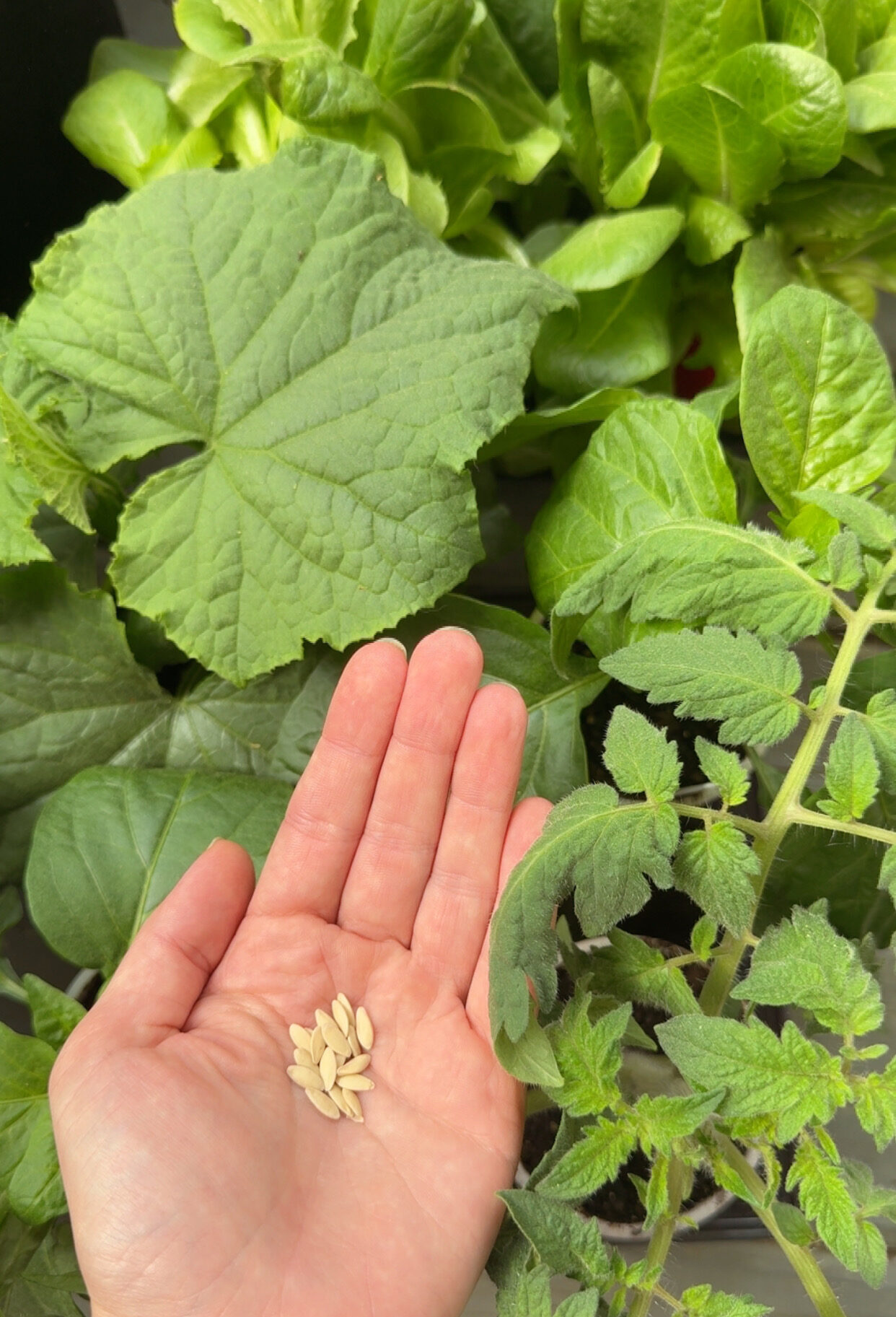Apartment Garden Seed Starting (Essentials That Actually Work)
If you’ve ever spiraled down the seed-starting rabbit hole on YouTube or Reddit (🙋♀️guilty), you already know how overwhelming it can be. Everyone’s got an opinion, a method, or a fancy setup that somehow costs a small fortune. But here’s the truth: you don’t need a ton of space, time, or money to grow your own little garden from scratch.
I live in a studio apartment, so space is tight. I’m also not in a season where I want to throw hundreds of dollars at growing a tomato. But I still want fresh food, a peaceful hobby, and that satisfying “I grew this!” feeling. So after trying alllll the things, I’ve narrowed it down to the 4 seed-starting essentials that actually work—plus a couple of budget-friendly bonus tools that made all the difference.
1. The Right Soil (It Doesn’t Have to Be Complicated)
Let’s start with dirt. There are entire threads online about making your own mix, but when you’re growing seeds in a small space, simplicity is everything. You want something that drains well and holds moisture—most commercial seed-starting soils are designed to do just that.
The real reason seed starter mix is worth buying? It’s sterilized. That means no hidden bacteria or pests sneaking in and destroying your baby sprouts before they even get started.
I used Burpee Eco-Friendly Super Growing Pellets made from natural coconut fibers. Not only are they great at preventing overwatering, but they were SO much easier to manage in my apartment than a big, messy bag of soil. I just hydrated the pellets and planted my seeds—no fuss, no cleanup, and no guilt if I forgot to water one day. link here -> https://amzn.to/4jiQ8NT
2. The Container (Don’t Skip This!)
This might be the most important one: choose the right container.
Too small, and your seedlings can’t grow strong roots. Too big, and you waste precious apartment space. What you do want is a container that allows for bottom watering—this is key to healthy root development and consistent moisture without overwatering the top (which can lead to mold, gnats, and all kinds of frustration).
I used the Burpee 16-cell reusable trays and they were perfect. The XL cells were just enough space for strong roots, super compact, and bottom-watering friendly. Make sure to get XL if you’re planning on growing bigger vegetables such as tomato, peppers, zucchini or cucumbers. Also, a bonus that you can reuse them every year! link -> https://amzn.to/4j9oQcI
3. The Lights (Spoiler: You Don’t Need Fancy Grow Lights)
Here’s where a lot of people get overwhelmed—grow lights. The internet will make you think you need to drop $200 on some specialty setup, but I’m here to tell you: you don’t need fancy grow lights.
I bought two 4-foot LED shop lights from Amazon two for $25. All you really need to look for is:
- At least 5000 lumens for brightness
- Daylight color temperature (around 6100K) to mimic the sun
That’s it! I mounted mine inside my bookshelf and used the included chains to adjust the height. Keep your lights just 1–2 inches above your plants to prevent “leggy” seedlings and encourage thick, strong stalks.
If you’re planning to grow full-sized vegetables indoors long-term, you’ll eventually need stronger lights—but for starting seeds? These are perfect. Here’s the ones I used -> https://amzn.to/42uunoI
4. Heat Matters (Especially for Peppers)
This one surprised me the most: a heating mat made a huge difference in how fast and strong my seeds grew.
Some veggies need a little extra warmth to sprout—especially peppers (jalapeños, bell peppers, hot peppers). They prefer soil temps between 75–80°F to germinate properly. I used the VivoHome 10″ heating mat (https://amzn.to/4lcJc6I) , and all 32 of my seedlings fit on it!
A quick tip: avoid placing your mat on a metal or stone surface—it can pull heat away and make it less effective.
Bonus Items That Helped (But Aren’t Essentials)
If you’re working with an odd schedule like me (hello, active duty life), or just want to make the process a little smoother, these two bonus items made things a lot easier:
- A small fan: I used a little stroller fan! Once my plants grew a few inches, I ran the fan on low a couple minutes a day to mimic wind. This helps strengthen their stalks and preps them for transplanting. Plus, it keeps the topsoil dry, which helps prevent mold. https://amzn.to/4cqh6RC
- A timer for the lights: Game-changer. Whether I’m on night shift or forget what day it is (because, life), my plants still get consistent light. Easy, stress-free, and they’re thriving. Here’s what I used and I loved it -> https://amzn.to/42h0iI7
The Bottom Line?
Starting seeds indoors doesn’t have to be complicated, expensive, or take over your apartment. I spent under $100 total and managed to clear a small section of my bookshelf to grow 32 healthy little plants. You don’t need a greenhouse or even a balcony—you just need a few smart choices and a little patience.
My sister-in-law even started hers on top of her kitchen cabinets. Get creative! There’s always a way to make it work for your space and your season of life.
If you’re dreaming of growing your own food—even in a tiny space—this is your sign to go for it. You can live a more sustainable, intentional lifestyle no matter where you are.
Got your own apartment gardening hacks? Let me know in the comments—I’d love to hear how you’re growing your garden life 🌿 And don’t forget to subscribe to our weekly emails to follow along with my little seed babies as they grow!
With love & sprouting dreams,
Mia – Becoming Her Daily

Free Daily Grace Cards
Pull a card. Take a breath. Begin again.
Download 12 printable prayer cards that guide you into peace, strength, and daily connection with God.

